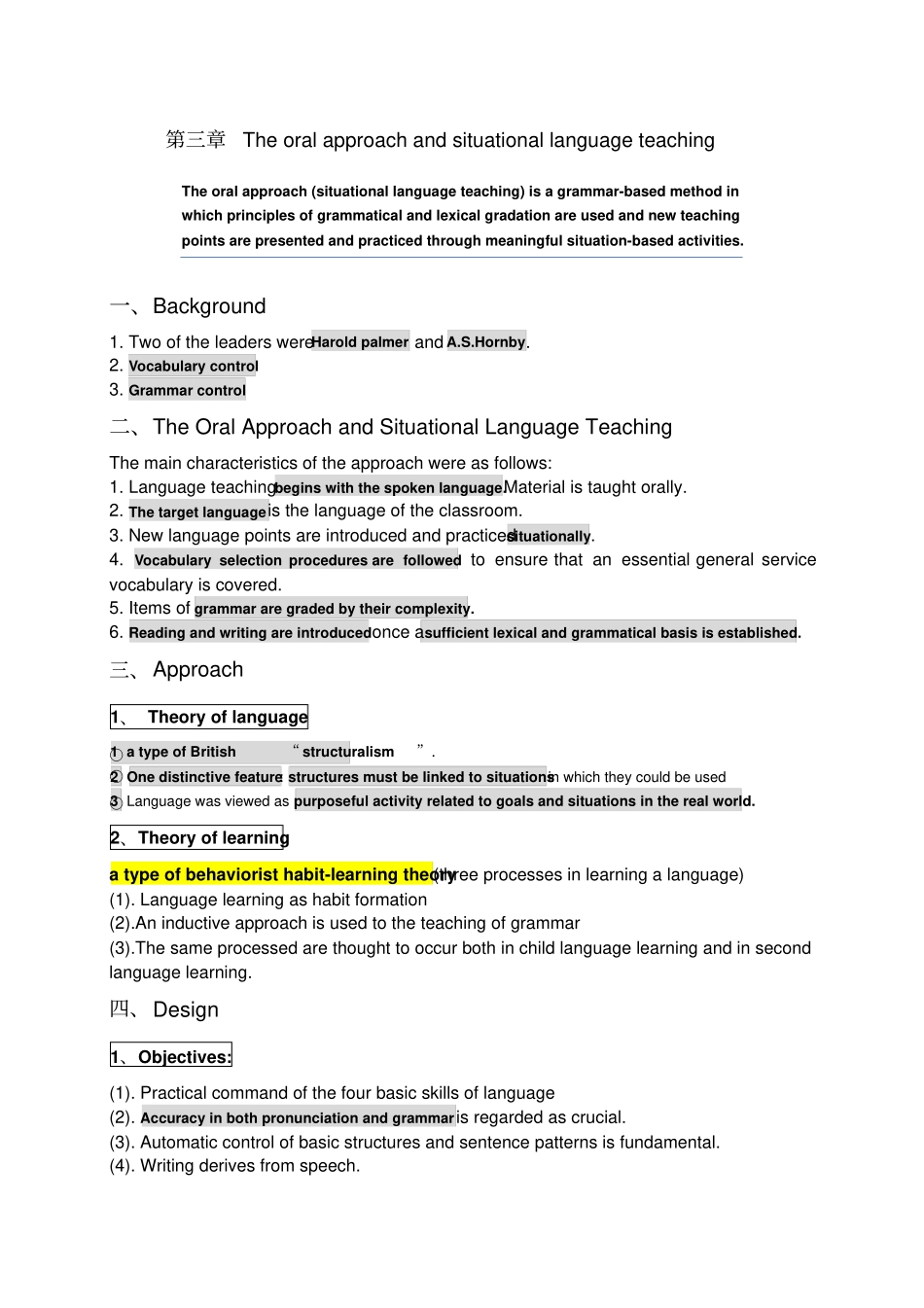第三章The oral approach and situational language teaching The oral approach (situational language teaching) is a grammar-based method in which principles of grammatical and lexical gradation are used and new teaching points are presented and practiced through meaningful situation-based activities. 一、Background 1. Two of the leaders were Harold palmer and A.S.Hornby. 2. Vocabulary control3. Grammar control二、The Oral Approach and Situational Language Teaching The main characteristics of the approach were as follows: 1. Language teaching begins with the spoken language. Material is taught orally. 2. The target language is the language of the classroom. 3. New language points are introduced and practiced situationally. 4. Vocabulary selection procedures are followed to ensure that an essential general service vocabulary is covered. 5. Items of grammar are graded by their complexity.6. Reading and writing are introduced once a sufficient lexical and grammatical basis is established. 三、Approach 1、 Theory of language ○1 a type of British “ structuralism”.○2 One distinctive feature: structures must be linked to situations in which they could be used ○3 Language was viewed as purposeful activity related to goals and situations in the real world.2、Theory of learning a type of behaviorist habit-learning theory(three processes in learning a language) (1). Language learning as habit formation (2).An inductive approach is used to the teaching of grammar (3).The same processed are thought to occur both in child language learning and in second language learning. 四、Design 1、Objectives: (1). Practical command of the four basic skills of language (2). Accuracy in both pronunciation and grammar is regarded as crucial. (...


